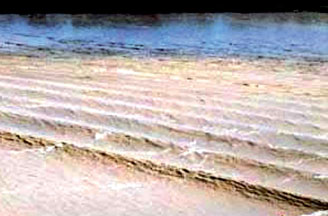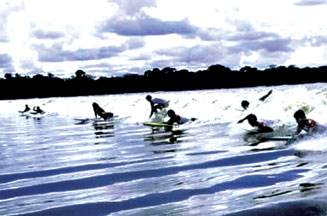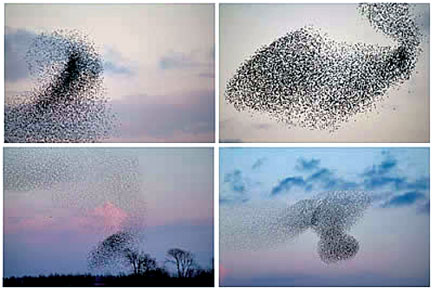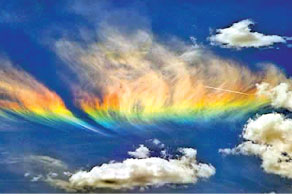Incredible natural phenomena
Brazilian’s longest wave on the Earth:
  Twice a year, between the months of February and March, the Atlantic
Ocean waters roll up the Amazon river, in Brazil, generating the longest
wave on the Earth. The phenomenon, known as the Pororoca, is caused by
the tides of the Atlantic Ocean which meet the mouth of the river. This
tidal bore generates waves up to 12 feet high which can last for over
half an hour. Twice a year, between the months of February and March, the Atlantic
Ocean waters roll up the Amazon river, in Brazil, generating the longest
wave on the Earth. The phenomenon, known as the Pororoca, is caused by
the tides of the Atlantic Ocean which meet the mouth of the river. This
tidal bore generates waves up to 12 feet high which can last for over
half an hour.
The name “Pororoca” comes from the indigenous Tupi language, where it
translates into “great destructive noise”. The wave can be heard about
30 minutes before its arrival, and it’s so powerful that it can destroy
anything, including trees, local houses and all kinds of animals.
The wave has become popular with surfers. Since 1999, an annual
championship has been held in Săo Domingos do Capim. However, surfing
the Pororoca is especially dangerous, as the water contains a
significant amount of debris from the margins of the river (often,
entire trees).
The record that we could find for surfing the longest distance on the
Pororoca was set by Picuruta Salazar, a brazilian surfer who, in 2003,
managed to ride the wave for 37 minutes and travel 12.5 kilometres. A
surfer’s dream: riding an almost never-ending wave.
Denmark’s Black Sun
During spring in Denmark, at approximately one half an hour before
sunset, flocks of more than a million European starlings (sturnus
vulgaris) gather from all corners to join in the incredible formations
shown above.
This phenomenon is called Black Sun (in Denmark), and can be
witnessed in early spring throughout the marshlands of western Denmark,
from March through to the middle of April. The starlings migrate from
the south and spend the day in the meadows gathering food, sleeping in
the reeds during the night.

Oddee.com
Idaho’s Fire Rainbow
 The atmospheric phenomenon known as a circumhorizon(tal) arc, or
“Fire rainbow”, appears when the sun is high in the sky (i.e., higher
than 58° above the horizon), and its light passes through diaphanous,
high-altitude cirrus clouds made up of hexagonal plate crystals. The atmospheric phenomenon known as a circumhorizon(tal) arc, or
“Fire rainbow”, appears when the sun is high in the sky (i.e., higher
than 58° above the horizon), and its light passes through diaphanous,
high-altitude cirrus clouds made up of hexagonal plate crystals.
Sunlight entering the crystals’ vertical side faces and leaving
through their bottom faces is refracted (as through a prism) and
separated into an array of visible colors.
When the plate crystals in cirrus clouds are aligned optimally (i.e.,
with their faces parallel to the ground), the resulting display is a
brilliant spectrum of colors reminiscent of a rainbow.
The example shown above was captured on camera as it hung for about
an hour across a several-hundred square mile area of sky above northern
Idaho (near the Washington border) on 3 June 2006. |

